#virtual exhibition software
Explore tagged Tumblr posts
Text
Hosting Better Virtual Events in 2024: A Guide to Success
Introduction:
As technology continues to advance, the landscape of virtual events is evolving rapidly. In 2024, the demand for seamless and engaging virtual experiences is higher than ever. Whether you’re an event organizer, a business professional, or someone planning to host a virtual gathering, this guide will provide you with valuable insights on how to elevate your virtual events in the coming year.
Choose the Right Virtual Event Platform:
The foundation of a successful virtual event lies in selecting the right platform. In 2024, numerous advanced platforms offer a variety of features to enhance the participant experience. Look for platforms that support interactive elements, networking opportunities, and customizable interfaces. Ensure that the chosen platform aligns with the goals and scale of your event.
Read more at: https://www.huddlexr.com/hosting-better-virtual-events-in-2024-a-guide-to-success/
0 notes
Text
Nextiz, the best virtual exhibition software lays a strong focus on giving attendees an immersive user experience that allows them to engage in lifelike events. This opens up options for appointments and pre-orders, as well as making a consumable sale on the spot. Make your products or services available to a global audience with a free virtual exhibition platform.
0 notes
Text
Tamagotchi Featured in A BESTIARY OF THE ANTHROPOCENE Art Exhibition in Netherlands
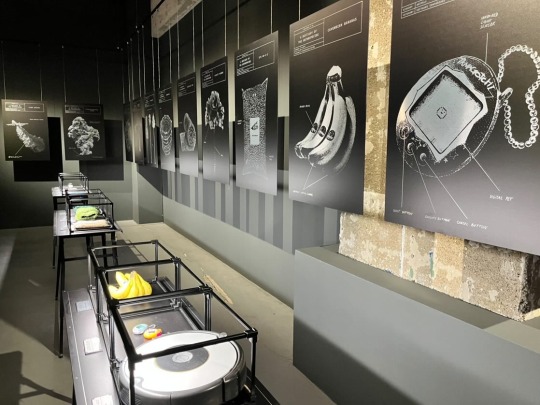
image source: evalien on Instagram
A BESTIARY OF THE ANTHROPOCENE is an illustrated compilation of hybrid creatures of our time, equally inspired by medieval bestiaries and observations of our damaged planet. Designed as a field handbook, it aims at helping us observe, navigate, and orientate into the increasingly artificial fabric of the world. The art exhibition was held at Mu Hybrid Art House in Eindhoven, The Netherlands.
Much to our surprise, Tamagotchi, and more specifically a Tamagotchi Connexion was pictured on a display at the event held in Den Haag, Netherlands. The display details that Tamagotchi is part of the animals kingdom, and categorized as a software companion. The display details the anatomy of the Tamagotchi, including the infrared strip, three buttons, and digital pet.
They also had Tamagotchi in a display with detailing more about the popular virtual pet. The art exhibition runs from December 12th, 2023 through March 17th, 2024.
#tamapalace#tamagotchi#tmgc#tamatag#virtualpet#bandai#thenetherlands#the netherlands#abestiaryoftheanthropocene#a bestiary of the anthropocene#art#artexhibit#art exhibit#netherlands
47 notes
·
View notes
Text
Immersive Audio Experiences: How 3D Audio Is Changing Event Design
Introduction: Events Are No Longer Just Visual
Think back to the last big event you attended — maybe a concert, a corporate presentation, or even a museum exhibit. Chances are, the audio played a bigger role than you realized. Today, sound isn’t just about amplifying voices or music. It’s becoming a multi-dimensional experience, thanks to a technology called 3D audio.
In a world where event organizers are constantly competing to capture attention, immersive audio experiences are quickly becoming a game-changer. It’s not just about hearing sound — it’s about feeling like you’re inside the sound itself.

What Is 3D Audio?
At its core, 3D audio simulates how we naturally hear sound in the real world. Normally, our ears detect sound from all directions — front, back, above, below, and everywhere in between. Traditional sound systems — like stereo or surround sound — mostly project audio from just a few fixed directions (usually left and right, or front and rear).
3D audio takes it further, creating an audio bubble where sound moves around you just like it would in real life. Imagine sitting at a nature-themed event where you hear birds fluttering overhead, leaves rustling to your side, and water trickling behind you — all from carefully placed speakers. It feels natural and fully immersive.
Why Immersive Audio Matters in Event Design
In modern event design, atmosphere matters as much as content. Whether it’s a tech conference, music festival, or product launch, creating a memorable experience is the goal. Audio isn’t just about making sure people can hear — it’s about making them feel connected to the space.
3D audio helps events stand out by:
Enhancing storytelling — At an art installation or exhibit, immersive sound can pull visitors into the story, guiding them through different areas using directional audio cues.
Creating emotional impact — At concerts, sound that moves through the crowd feels way more exciting than static front-of-stage audio.
Controlling focus — In corporate presentations or educational events, speakers can direct attention to specific parts of a stage or screen by shifting audio emphasis.
Key Technologies Driving 3D Audio
1. Spatial Audio Processing
This software analyzes how sound should behave in a space, adjusting for listener position, speaker placement, and acoustics. It makes sure sounds come from the right place at the right time, even if listeners move around.
2. Object-Based Audio
Instead of mixing audio into fixed channels (like left or right speakers), object-based audio treats each sound as a separate “object” that can move independently through space. This is what allows a sound to smoothly move from one side of a room to the other.
3. Ambisonics and Binaural Audio
Ambisonics records audio in a full sphere (360 degrees) around a listener.
Binaural audio creates immersive experiences through headphones, by mimicking how human ears naturally hear sound from different directions.
How 3D Audio Is Used in Different Events
Concerts and Music Festivals
Live music feels richer when sound isn’t just blasting from the stage, but surrounding the audience. With 3D audio, instruments and vocals can move through the crowd, matching the energy and mood of the performance.
Corporate Events
At product launches or conferences, spatial audio can direct focus to key speakers or product displays, guiding the audience’s attention without the need for visual cues.
Museums and Art Installations
Art and sound installations are some of the biggest adopters of 3D audio. Imagine walking through a virtual forest, with realistic environmental sounds guiding you through different sections of an exhibit.

Theme Parks and Attractions
Attractions use spatial soundscapes to enhance rides, walkthrough experiences, and even waiting areas, helping build anticipation and immersion.
Designing Events with 3D Audio in Mind
If you’re planning an event, choosing the right audio gear matters more than ever. Not all speakers and systems can handle 3D audio, so working with professional audio shops can make sure you get equipment designed for spatial sound, along with advice on optimal placement and software.
As technology keeps evolving, the line between sound and space is disappearing. 3D audio is no longer just for VR headsets or fancy theaters — it’s becoming a core part of event design. Whether you’re organizing a concert, a corporate event, or an interactive installation, immersive audio helps create unforgettable moments that leave audiences talking long after they’ve left.
#music#audiogears#audio#dj#audio shops#professional audio equipment#brooklyn#speakers#brooklyn audio shop#musician#pro audio
2 notes
·
View notes
Text
Using Holographic 3D Projectors to Visualize Architectural Concepts
Holographic 3-dimensional projectors are now employed by architects and designers to transform their structure blueprints into reality. This mark enables one to appreciate the floating 3D images and thus makes the imagination and explanation of architectural drawings easier. Holographic projectors are altering the design, presentation, and discussion of building projects.
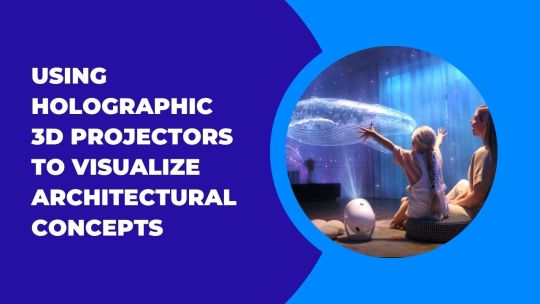
How Does Holographic 3D Projection Work?
A holographic 3d projector is responsible for generating floating three-dimensional images. These images are made by the projection system using lasers, mirrors, and special optics. Traditional projection devices that provide flat images on the wall do not suffice; holographic projection enables models that one can move around and see from all angles. There is no special eyewear that needs to be put on for viewing these holograms.
Some projectors are even equipped with motion sensors. It means that you are able to use your hands in order to rotate the model or increase the details. And yet most of the devices function without them, even if these ones permit the use of hologram glasses for better interactivity.
Reasons Why 3D Holograms Are Advantageous In Architecture
A 3d hologram explanation is already available - this makes explaining building designs to both team members and clients very easy. People visualize a building better when a 3D hologram is shown to them, where they can envisage the dimensions of the models as opposed to mere 2-dimensional sketches. They can demonstrate where the rooms shall go, window placement, and the landscaping in relation to the structure.
Clients can instantly respond with their feedback. If any alterations are required, the architect will simply adjust the hologram and quickly provide them with the updated design. This can save on time as well as minimize errors.
Enabling Teams’ Synergy
The use of a holographic 3d projector makes collaboration in a team possible. The art of drawing and using structural software is complementary in that all members of a team will stand around the hologram and discuss the plan. Members can refer to specific portions of the model and offer their suggestions. Even without being in one place, groups are able to use the hologram projection to look at the model simultaneously and do their work through the network. It increases the efficiency of meetings and helps people to make decisions sooner.
Hologram Projection and the Conventional Ways of Working
Conventional means such as printed drawings, computer monitors, and even virtual reality goggles have their shortcomings. With the use of a holographic projector, users are allowed to see the model and communicate about it with prospective interest, all at once. There is no need to put weight in the headsets and spin the tablet around. The hologram is placed in the room, and one can get it.
One may introduce some other functions with hologram glasses, but for the most part, the user needs no such thing.
Holographic Projection According to Contemporary Architects
In order to effectively manipulate a holographic 3d projector, an architect must create it in a computer using a 3D basis. Next, they adapt the model for the projector in a way that sometimes involves making it move or emit sounds. Subsequently, they verify that the hologram is accurate with regard to detail and content. At last, when everything is prepared, they employ it in a conference, exhibition, or meeting with a client in order to generate more ideas.
Architectural Development: What Will Be Next in Holographic Projectors?
The use of holographic screens tends to increase significantly. As the cost of technology drops and becomes less complicated, more and more architectural professionals will stop resisting the encroachment of holographic 3d projectors. We may even be lucky to see the advent of portable projectors, resolutions that will make you want to look more, and crazy ways of engaging AR or VR.
Wrap Up!
Holographic 3d projectors have revolutionized the field of architecture. It enables users to comment, factor, and Design architectures in a new and participatory manner. There is no doubt that this technology will advance, and every architect will be familiar with it while designing. Fancy words like clarity and excitement about design will not be special.
1 note
·
View note
Text
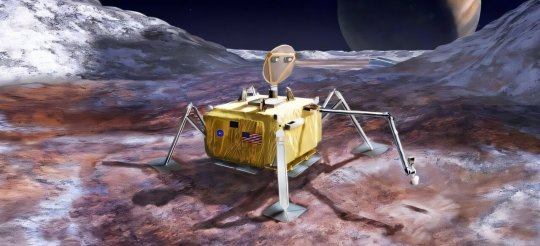
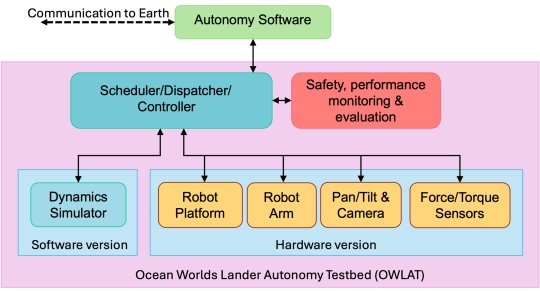
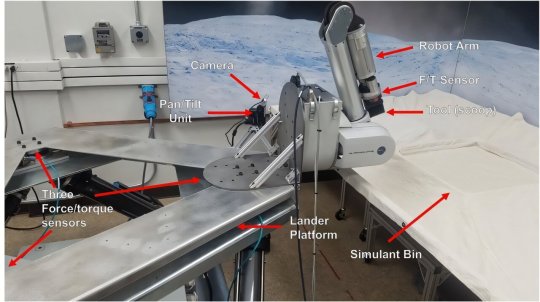
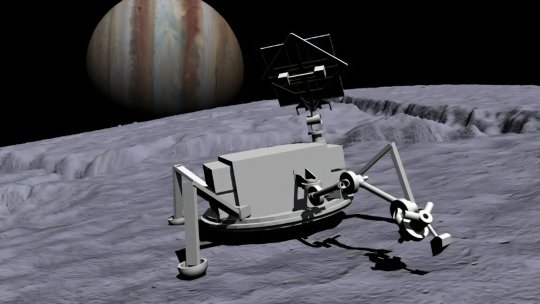
Planning autonomous surface missions on ocean worlds
hrough advanced autonomy testbed programs, NASA is setting the groundwork for one of its top priorities—the search for signs of life and potentially habitable bodies in our solar system and beyond. The prime destinations for such exploration are bodies containing liquid water, such as Jupiter's moon Europa and Saturn's moon Enceladus.
Initial missions to the surfaces of these "ocean worlds" will be robotic and require a high degree of onboard autonomy due to long Earth-communication lags and blackouts, harsh surface environments, and limited battery life.
Technologies that can enable spacecraft autonomy generally fall under the umbrella of Artificial Intelligence (AI) and have been evolving rapidly in recent years. Many such technologies, including machine learning, causal reasoning, and generative AI, are being advanced at non-NASA institutions.
NASA started a program in 2018 to take advantage of these advancements to enable future icy world missions. It sponsored the development of the physical Ocean Worlds Lander Autonomy Testbed (OWLAT) at NASA's Jet Propulsion Laboratory in Southern California and the virtual Ocean Worlds Autonomy Testbed for Exploration, Research, and Simulation (OceanWATERS) at NASA's Ames Research Center in Silicon Valley, California.
NASA solicited applications for its Autonomous Robotics Research for Ocean Worlds (ARROW) program in 2020, and for the Concepts for Ocean worlds Life Detection Technology (COLDTech) program in 2021.
Six research teams, based at universities and companies throughout the United States, were chosen to develop and demonstrate autonomy solutions on OWLAT and OceanWATERS. These two- to three-year projects are now complete and have addressed a wide variety of autonomy challenges faced by potential ocean world surface missions.
OWLAT
OWLAT is designed to simulate a spacecraft lander with a robotic arm for science operations on an ocean world body. Each of the OWLAT components is detailed below.
The hardware version of OWLAT is designed to physically simulate motions of a lander as operations are performed in a low-gravity environment using a six degrees-of-freedom (DOF) Stewart platform. A seven DOF robot arm is mounted on the lander to perform sampling and other science operations that interact with the environment. A camera mounted on a pan-and-tilt unit is used for perception.
The testbed also has a suite of onboard force/torque sensors to measure motion and reaction forces as the lander interacts with the environment. Control algorithms implemented on the testbed enable it to exhibit dynamics behavior as if it were a lightweight arm on a lander operating in different gravitational environments.
The team also developed a set of tools and instruments to enable the performance of science operations using the testbed. These various tools can be mounted to the end of the robot arm via a quick-connect-disconnect mechanism. The testbed workspace where sampling and other science operations are conducted incorporates an environment designed to represent the scene and surface simulant material potentially found on ocean worlds.
The software-only version of OWLAT models, visualizes, and provides telemetry from a high-fidelity dynamics simulator based on the Dynamics And Real-Time Simulation (DARTS) physics engine developed at JPL. It replicates the behavior of the physical testbed in response to commands and provides telemetry to the autonomy software.
The autonomy software module interacts with the testbed through a Robot Operating System (ROS)-based interface to issue commands and receive telemetry. This interface is defined to be identical to the OceanWATERS interface. Commands received from the autonomy module are processed through the dispatcher/scheduler/controller module and used to command either the physical hardware version of the testbed or the dynamics simulation (software version) of the testbed.
Sensor information from the operation of either the software-only or physical testbed is reported back to the autonomy module using a defined telemetry interface. A safety and performance monitoring and evaluation software module ensures that the testbed is kept within its operating bounds. Any commands causing out of bounds behavior and anomalies are reported as faults to the autonomy software module.
OceanWATERS
At the time of the OceanWATERS project's inception, Jupiter's moon Europa was planetary science's first choice in searching for life. Based on ROS, OceanWATERS is a software tool that provides a visual and physical simulation of a robotic lander on the surface of Europa.
OceanWATERS realistically simulates Europa's celestial sphere and sunlight, both direct and indirect. Because we don't yet have detailed information about the surface of Europa, users can select from terrain models with a variety of surface and material properties. One of these models is a digital replication of a portion of the Atacama Desert in Chile, an area considered a potential Earth-analog for some extraterrestrial surfaces.
JPL's Europa Lander Study of 2016, a guiding document for the development of OceanWATERS, describes a planetary lander whose purpose is collecting subsurface regolith/ice samples, analyzing them with onboard science instruments, and transmitting results of the analysis to Earth.
The simulated lander in OceanWATERS has an antenna mast that pans and tilts; attached to it are stereo cameras and spotlights. It has a 6 degree-of-freedom arm with two interchangeable end effectors—a grinder designed for digging trenches, and a scoop for collecting ground material. The lander is powered by a simulated non-rechargeable battery pack. Power consumption, the battery's state, and its remaining life are regularly predicted with the Generic Software Architecture for Prognostics (GSAP) tool.
To simulate degraded or broken subsystems, a variety of faults (e.g., a frozen arm joint or overheating battery) can be "injected" into the simulation by the user; some faults can also occur "naturally" as the simulation progresses, e.g., if components become over-stressed. All the operations and telemetry (data measurements) of the lander are accessible via an interface that external autonomy software modules can use to command the lander and understand its state. (OceanWATERS and OWLAT share a unified autonomy interface based on ROS.)
The OceanWATERS package includes one basic autonomy module, a facility for executing plans (autonomy specifications) written in the PLan EXecution Interchange Language, or PLEXIL. PLEXIL and GSAP are both open-source software packages developed at Ames and available on GitHub, as is OceanWATERS.
Mission operations that can be simulated by OceanWATERS include visually surveying the landing site, poking at the ground to determine its hardness, digging a trench, and scooping ground material that can be discarded or deposited in a sample collection bin. Communication with Earth, sample analysis, and other operations of a real lander mission, are not presently modeled in OceanWATERS except for their estimated power consumption.
Because of Earth's distance from the ocean worlds and the resulting communication lag, a planetary lander should be programmed with at least enough information to begin its mission. But there will be situation-specific challenges that will require onboard intelligence, such as deciding exactly where and how to collect samples, dealing with unexpected issues and hardware faults, and prioritizing operations based on remaining power.
Results
All six of the research teams used OceanWATERS to develop ocean world lander autonomy technology and three of those teams also used OWLAT. The products of these efforts were published in technical papers, and resulted in the development of software that may be used or adapted for actual ocean world lander missions in the future.
TOP IMAGE: Artist's concept image of a spacecraft lander with a robot arm on the surface of Europa. Credits: NASA/JPL – Caltech
CENTRE IMAGE The software and hardware components of the Ocean Worlds Lander Autonomy Testbed and the relationships between them. Credit: NASA/JPL – Caltech
LOWER IMAGE: The Ocean Worlds Lander Autonomy Testbed. A scoop is mounted to the end of the testbed robot arm. Credit: NASA/JPL – Caltech
BOTTOM IMAGE: Screenshot of OceanWATERS. Credit: NASA/JPL – Caltech
2 notes
·
View notes
Text
How to Create 2D Graphics for Games?

Introduction
If you have a question like “How to Create 2D Graphics for Games?” then this article is for you. 2D game graphics are visuals used in video games that exist on a two-dimensional plane. Unlike 3D graphics, which have depth and perspective, 2D graphics are flat and lack depth perception. Importance of Quality 2D Graphics in Games Quality 2D graphics play a crucial role in enhancing the visual appeal and overall gaming experience. They help convey the game's narrative, evoke emotions, and immerse players in captivating virtual worlds. Overview of Popular 2D Game Art Styles - Monochromatic: Uses a single color or shades of a single color for the entire artwork. - Pixel Art: Utilizes small, square pixels to create intricate designs and characters. - Vector Art: Relies on mathematical equations to render smooth, scalable graphics. - Cutout Art: Features flat, stylized artwork with visible cutout edges. - Doodle Art: Characterized by hand-drawn, whimsical sketches and illustrations.
Different 2D Game Art Styles
Monochromatic Art Monochromatic art employs a single color palette to create visually striking compositions. Games like "Limbo" and "Badland" showcase the atmospheric and minimalist appeal of monochromatic art.

Pixel Art Pixel art utilizes tiny square pixels to form detailed images and animations. Popularized by games like "Minecraft" and "Stardew Valley" pixel art exudes retro charm and nostalgia.
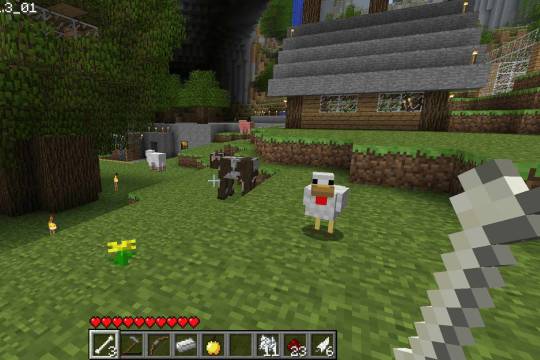
Vector Art Vector art comprises geometric shapes and lines that can be resized without losing quality. Games such as "Angry Birds" and "Monument Valley" leverage vector graphics for their clean and scalable visuals.

Cutout Art Cutout art features flat, paper-like characters and environments with distinct outlines. Titles like "Paper Mario" and "Cuphead" showcase the vibrant and stylized nature of cutout art.
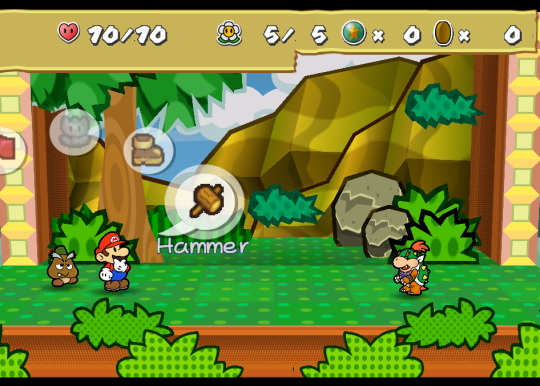
Doodle Art Doodle art embraces a free-form and whimsical drawing style, often resembling sketches in a notebook. Games like "Doodle Jump" and "Scribblenauts" exhibit the playful and imaginative essence of doodle art.

Step-by-Step Guide to Creating 2D Game Graphics
- Preparing for Artwork Creation: Before diving into artwork creation, it's essential to understand the game's requirements and the preferences of the target audience. Selecting a suitable art style based on the game's theme and genre is paramount for cohesive visual storytelling. - Conceptualizing and Sketching: Start by developing concept art for characters, environments, and props through iterative sketching and feedback loops. This process allows for the exploration of various design ideas and ensures alignment with the game's artistic vision. - Digital Art Creation: Utilize tools and software tailored for 2D game artwork, such as Adobe Photoshop, Procreate, or Aseprite. Create characters, backgrounds, and objects with attention to detail and consistency in art style. - Optimization and Integration: Optimize artwork for performance by adhering to file size limitations and resolution requirements. Ensure seamless integration of art assets into game engines, maintaining compatibility across different platforms and devices.
Common Mistakes to Avoid in 2D Game Graphics
- Lack of Understanding of Target Audience: Failing to grasp the preferences and expectations of the target audience can result in mismatched visuals that fail to resonate with players. - Inconsistency in Art Style: Inconsistencies in art style can disrupt immersion and cohesion within the game world, detracting from the overall player experience. - Inaccuracy in Artwork: Artwork that lacks attention to detail or realism may fail to convey the intended aesthetic or narrative, diminishing its impact on players. - Poor Optimization for Performance: Overly complex or unoptimized artwork can lead to performance issues such as lag or stuttering, negatively impacting gameplay. - Rushing Artwork Creation Process: Rushing the artwork creation process can result in subpar quality and missed opportunities for creativity and refinement.
Hiring 2D Artists for Creating 2D Graphics
Options for Hiring 2D Artists - Freelance Platforms: Use platforms like Upwork or Fiverr for project-based collaborations. - Outsourcing Companies: Partner with firms specializing in game development services. - Game Industry Events: Attend conferences to network with professionals. - Social Media: Engage with artists on platforms like LinkedIn or Twitter. Criteria for Selecting 2D Artists - Portfolio: Look for diversity, style consistency, and relevance to your project. - Experience: Prioritize artists with gaming industry experience or similar projects. - Professionalism: Consider communication skills, responsiveness, and meeting deadlines. - Adherence to Deadlines: Ensure artists can deliver on time.
Conclusion
In summary, mastering the creation of quality 2D graphics is crucial for enhancing the visual appeal and immersive experience of video games. By understanding different art styles, avoiding common pitfalls, and selecting the right talent, developers can bring their game worlds to life. Whether you're a seasoned artist or just starting out, continuous learning and experimentation are key to creating captivating 2D game graphics that resonate with players. Join our community to stay updated and connected, and let's continue to elevate the game industry together.
FAQs
1. What software is best for creating 2D graphics for games? Popular software options for creating 2D graphics for games include Adobe Photoshop, GIMP, and Aseprite. Choose the software that best fits your workflow and skill level. 2. Do I need artistic talent to create 2D graphics for games? While artistic talent certainly helps, anyone can learn to create 2D graphics with practice and dedication. Start with the basics and experiment with different techniques to develop your skills. 3. Can I use pre-made assets for my game? Yes, you can use pre-made assets for your game, but be mindful of licensing restrictions and ensure that the assets fit the style and theme of your game. 4. How can I learn more about creating 2D graphics for games? There are many online resources available for learning about creating 2D graphics for games, including tutorials, forums, and online courses. Start by exploring beginner-friendly tutorials and gradually expand your skills. 5. What are some common mistakes to avoid when creating 2D graphics for games? Common mistakes to avoid include using too many layers, overcomplicating designs, neglecting optimization, and ignoring feedback from playtesting. Keep your designs simple, optimize for performance, and iterate based on feedback from players.
Join Our Community
Stay connected with us and become a part of our vibrant community on social media: - Facebook - Linkedin - X
Get In Touch
Have questions, suggestions, or feedback? We’d love to hear from you! Reach out to us through our contact page. At Universe 2.0, we provide information, tutorials, guides, etc., to grow the game industry. Visit us at: universe-2.com Read the full article
2 notes
·
View notes
Text
From Coding to Creation: Java's Versatile Influence
Java, often described as the "king of programming languages," stands as a monumental force that has significantly influenced the trajectory of modern software development. For over two decades, Java has proven its versatile, powerful, and dependable programming language, underpinning a vast array of applications, platforms, and systems that permeate our digital landscape. In this comprehensive exploration, we will embark on a journey to unravel the essence of Java, delving deep into what makes it indispensable and why it continues to be the preferred choice for programmers across diverse domains.

What is Java?
At its core, Java is a high-level, object-oriented, and platform-independent programming language that defies the conventional limitations of traditional coding. Conceived in the mid-1990s through the visionary efforts of James Gosling and his adept team at Sun Microsystems (now seamlessly integrated into Oracle Corporation), Java introduced a revolutionary concept that continues to define its identity: "Write Once, Run Anywhere." This groundbreaking principle signifies that Java applications exhibit a remarkable adaptability, capable of executing seamlessly on various platforms, provided a Java Virtual Machine (JVM) stands ready to facilitate their execution. This single feature alone positions Java as an unparalleled workhorse, transcending the boundaries of operating systems and hardware, and ushering in an era of software portability and compatibility.
Key Features of Java:
Platform Independence: Java's unparalleled platform independence is the cornerstone of its success. Code authored in Java is liberated from the confines of a single operating system, enabling it to traverse across a plethora of platforms without requiring any cumbersome modifications. This inherent portability not only obliterates compatibility concerns but also streamlines software deployment, eliminating the need for platform-specific versions.
Object-Oriented Paradigm: Java's steadfast adherence to the object-oriented programming (OOP) paradigm cultivates a development environment characterized by modularity and maintainability. By encapsulating code into discrete objects, Java empowers developers to construct intricate systems with greater efficiency and ease of management, a quality particularly favored in large-scale projects.
Rich Standard Library: The Java Standard Library stands as a testament to the language's comprehensiveness. It comprises a vast repository of pre-built classes and methods that cater to a wide spectrum of programming tasks. This comprehensive library significantly reduces development overhead by offering readily available tools for commonplace operations, bestowing developers with the invaluable gift of time.
Security: In an era marred by cyber threats and vulnerabilities, Java emerges as a paragon of security-conscious design. It incorporates robust security features, including a sandbox environment for executing untrusted code. Consequently, Java has become the de facto choice for building secure applications, particularly in industries where data integrity and user privacy are paramount.
Community Support: The strength of Java's thriving developer community is an asset of immeasurable value. This vast and active network ensures that developers are never left wanting for resources, libraries, or frameworks. It provides a dynamic support system where knowledge sharing and collaborative problem-solving flourish, accelerating project development and troubleshooting.
Scalability: Java is not confined by the scale of a project. It gracefully adapts to the demands of both modest applications and sprawling enterprise-level systems. Its versatility ensures that as your project grows, Java will remain a steadfast companion, capable of meeting your evolving requirements.
Performance: Java's Just-In-Time (JIT) compiler serves as the vanguard of its performance capabilities. By dynamically optimizing code execution, Java ensures that applications not only run efficiently but also deliver exceptional user experiences. This, coupled with the ability to harness the power of modern hardware, makes Java a preferred choice for performance-critical applications.
Multithreading: Java's built-in support for multithreading equips applications to execute multiple tasks concurrently. This not only enhances responsiveness but also elevates the overall performance of applications, particularly those designed for tasks that demand parallel processing.
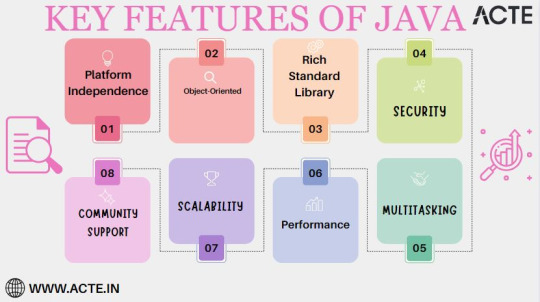
Java is not merely a programming language; it represents a dynamic ecosystem that empowers developers to fashion an extensive array of applications, ranging from mobile apps and web services to enterprise-grade software solutions. Its hallmark feature of platform independence, complemented by its rich libraries, security fortifications, and the formidable backing of a robust developer community, collectively underpin its enduring popularity.
In a world where digital innovation propels progress, Java stands as an essential cornerstone for building the technologies that sculpt our future. It's not merely a language; it's the key to unlocking a boundless realm of opportunities. For those seeking to embark on a journey into the realm of Java programming or aspiring to refine their existing skills, ACTE Technologies stands as a beacon of expert guidance and comprehensive training. Their programs are tailored to equip you with the knowledge and skills necessary to harness the full potential of Java in your software development career.
As we navigate an era defined by digital transformation, Java remains a trusted companion, continually evolving to meet the ever-changing demands of technology. It's not just a programming language; it's the linchpin of a world characterized by innovation and progress. Let ACTE Technologies be your trusted guide on this exhilarating journey into the boundless possibilities of Java programming.
7 notes
·
View notes
Text


Every object has its function, and with it a set of implicit instructions about how it should perform. In this way, our objects—in their suggestion of prescribed use, narrative, and meaning—organize our surroundings and compel us to perform accordingly, as Baudrillard theorized in his 1968 book The System of Objects. But what if objects could be peeled away from their function? Utility Fatigue poses this question by disrupting the narrative of everyday found objects and rearranging their given grammar to invite new forms of language and behavior.
Linda Franke´s sculptural practice is an extension of her performance work and her experiments in virtual space, in which she questions why we do the things we do the way we do and wonders what it would look like if we don’t. In these scenarios, she stages altered or invented routines to exhibit the close relationship between futility and freedom, agency and chance. Working in between virtual and real space, she is interested in capturing the physical body within its limitations in contrast to the always-intact and transformable objects created with software.
Here, a chair is cast in silicone becoming heavy and tender. With the familiar rendered unfamiliar, the viewer is confronted with the emotional, narratological qualities of the object. Interested in the threshold between chair and chair-ness, Franke simultaneously explores the functionality that it once held—with its meaning embedded into its materiality and shape—and the possibilities that it could hold, with its meaning estranged from its materiality and leftover fragments of its original shape. In doing so she shifts the object´s value from one that is tied to its function to one that is indifferent to those demands.
Unfastened from their utility, the objects are unsteady and unwieldy. At once appealing and abject, they stagger in space, unable to stand up independently. As if to provide some framework, however makeshift, Franke constructs armatures for these forms to drape over, lean against, or hang from. The tension between the object and its environment speaks to a precarious limit of recognition, allowing a liberating futility that undermines the semiotic order objects insist on.
Utility Fatigue is full of these starts and stops—gestures towards trying even if failing, becoming something only to turn back into nothing—in acknowledgment of the moments of mundanity, ubiquitous and invisible, that ultimately comprise meaning. Every object is a solution to a problem. Their existence is justified by a human need, even if the need is to be without a solution.
2 notes
·
View notes
Text
Hey Connections!
I am looking forward to work with you as you already know my profile and if don't you can check it in my LinkedIn profile.
I am seeking work, collaboration, partnership As you all know V4U is an experiential marketing company and we provide Tech-Hardware based Solutions to meet your requirements.
If you are a Corporate, Event Company, Wedding Planner, Experiential Marketers, Any Industry, Tech is required everywhere.
We offer wide range of tech-hardware based products and services like
AR/VR | Projection Mapping | software solution | LED TVs (both touch and non-touch) | AV systems covering audio to visual needs | touch/non-touch kiosks | digital signages | hologram cubes/fans/displays | flip-books | selfie booths | 360 video booths | mirror booths | 3D AI portal.
Wedding | Exhibitions | Expos | Museum | Corporate Events | Inauguration | Concerts | Virtual Events | Malls | Buildings | Restaurants | Resorts | Halls
Hope to collaborate with you!
Thanks and Regards [email protected] +91-9082930029
#experientialmarketing#technology#brandactivation#eventservices#eventvendor#corporatetech#corporatech#tech#event#marketing#branding#exponential#ar#vr#projectionmapping#3dart#3dgame#3dvisuals#3dprojection#hologram#display#touch#nontouch#kiosk#signage#av#system#wedding#party#concert
2 notes
·
View notes
Text
Best Software for 3d art galleries !
Creating and displaying 3D art galleries requires a combination of software tools to design, model, and present the artwork effectively. Check these software options for different stages of creating a 3D art gallery: 3D Modeling and Sculpting: Blender: A powerful and free open-source software that offers comprehensive 3D modeling, sculpting, and animation capabilities. ZBrush: A popular tool for digital sculpting, ideal for creating intricate and detailed 3D models. Autodesk Maya: Widely used in the entertainment industry for 3D modeling, animation, and rendering. 3D Rendering and Visualization: Unreal Engine: A real-time 3D rendering engine that allows for highly immersive and interactive experiences. Unity: Another real-time 3D rendering engine commonly used for interactive experiences and video games. V-Ray: A high-quality rendering engine often used for creating photorealistic images. 3D Virtual Gallery Creation: Eternal3D.com where you can create your own 3D galleries using photos and videos. Sketchfab: An online platform where you can upload and share 3D models, create galleries, and embed them on websites or social media. Artsteps: A platform that allows artists to design virtual galleries and exhibitions with customizable spaces and layouts. VRChat: A virtual reality platform where you can create 3D galleries and interact with others in a social VR environment. 3D Presentation and Visualization: Substance Painter: A texture painting tool that allows artists to add realistic materials and textures to their 3D models. KeyShot: A user-friendly rendering and animation software that produces high-quality visuals with minimal effort. Adobe Dimension: Designed for creating 3D mockups and product visualizations with a user-friendly interface. Remember that the best software depends on your specific needs and preferences. For example, Blender and Sketchfab are excellent choices for artists on a budget or those looking for free options. On the other hand, professional artists and studios may prefer industry-standard software like Maya or Unreal Engine for their advanced features and capabilities. To find the right software for your 3D art gallery, consider your level of expertise, the complexity of the project, and the desired presentation format. It's also essential to explore tutorials and online resources to familiarize yourself with the chosen software and make the most of its potential for creating stunning 3D art galleries. #virtualartexhibition #ImmerseInArt #eternal3d #virtual #art #exhibition #3dartexhibition Eternal3D.com #california #cerritos #unitedstate #eternal3d #3d #space #virtualexhibition #virtua l #contemporaryart #onlineexhibition #artexhibition #artwork #artist #paintings #fineart #artgallery #stayhome #virtualgallery #modernart #DigitalExhibition #artonline #gallery #interiordesign Read the full article
2 notes
·
View notes
Text
Digital Immersion: Elevating Virtual Events through Dwell Time Mastery
n the rapidly evolving landscape of events, the virtual realm has become the new frontier, offering unparalleled opportunities for connection and engagement. As we navigate this digital shift, the metrics we use to measure success must evolve as well. One metric that has emerged as a key indicator of success in virtual events is dwell time – the amount of time participants actively engage with the event content. In this blog, we delve into why dwell time is pivotal and explore how it has become a key KPI for the success of virtual events.
Understanding Dwell Time in Virtual Events
Before we delve into its significance, let’s grasp the concept of dwell time. In the virtual event sphere, dwell time represents the duration an attendee spends actively participating in the event. This includes watching presentations, engaging in discussions, networking, and interacting with event features. Unlike traditional in-person events where physical presence is a given, virtual events require intentional and sustained engagement to be deemed successful.
Dwell Time as a Key KPI
Dwell time stands out as a crucial Key Performance Indicator for virtual events for several reasons. Unlike metrics such as attendance numbers or click-through rates, dwell time provides a more nuanced understanding of participant engagement. It goes beyond mere participation and indicates the depth of interaction and interest.
As virtual events aim to replicate the immersive experience of in-person gatherings, the quality of engagement becomes paramount. Higher dwell times correlate with increased participant satisfaction, a deeper connection to the content, and a greater likelihood of continued participation in future events.
Factors Influencing Dwell Time
Several factors contribute to the overall dwell time of virtual events. Event organizers must carefully curate content, ensuring it is not only relevant but also captivating. Engaging speakers, thought-provoking discussions, and interactive elements all play a role in keeping participants invested in the event.
Read More at: https://www.huddlexr.com/digital-immersion-elevating-virtual-events-through-dwell-time-mastery/
0 notes
Text
Hybrid event management software

Audience contact not only helps to develop trust but also provides value by transforming inactive attendees into potential customers. Our built-in capabilities are helpful and generate genuine audience involvement, resulting in more leads and a higher return on investment. Hybrid event management software
0 notes
Text
The Role of AI in Mobile App Development
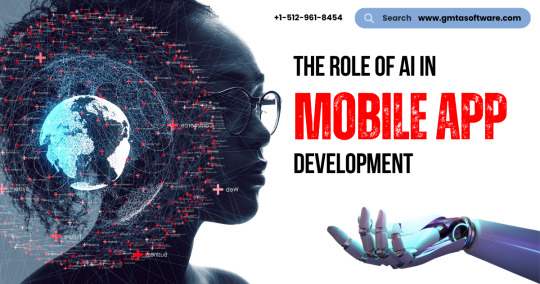
The Role of AI in Mobile App Development has emerged as a transformative force in the ever-changing technological world, altering industries and pushing the boundaries of creativity. As we see AI incorporated into mobile applications, it is evident that this symbiotic relationship is more than simply a technological trend, but a fundamental shift in how we interact with our devices. We will examine AI’s multifaceted role in mobile app development, including its impact on user experiences, predictive analytics, voice recognition, performance optimization, enhanced security, and development process automation, in this in-depth investigation.
1. Improved User Experience:
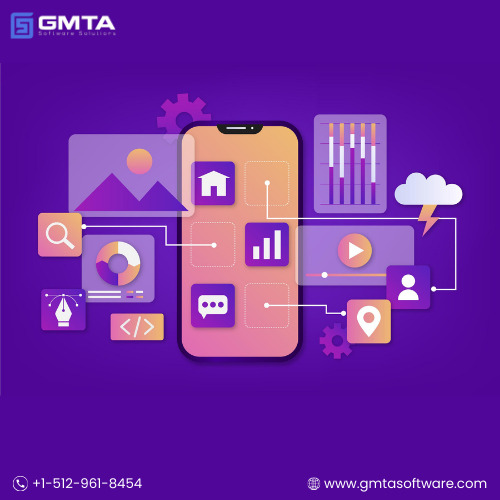
The capacity of artificial intelligence (AI) to improve user experiences is important to its position in mobile app development. Applications that are one-size-fits-all are no longer accessible. AI-powered applications can now recognize and respond to individual user behavior thanks to sophisticated machine learning algorithms. These algorithms assess user habits, preferences, and historical data to deliver a tailored experience, demonstrating the benefits of incorporating AI in mobile app design. AI integration guarantees that mobile apps adapt to each user’s particular demands, resulting in greater user delight and engagement, from personalized content recommendations to tailored user interfaces.
Anyone seeking to develop budget-friendly mobile apps must consider AI as a cost-effective alternative. See our blog on creating budget-friendly mobile apps for more information on how to use AI efficiently without breaking the wallet.
2. Analytics Predictive:

One of AI’s differentiating characteristics in mobile app development is its predictive analytics capabilities. By using the power of machine learning, mobile apps can now predict user requirements and behaviors. AI-powered predictive analytics transforms mobile applications into intuitive and anticipatory tools, whether it’s anticipating the next music a user would enjoy, recommending similar things, or delivering personalized content ideas. This not only enhances user interactions, but also the overall efficacy of the program, underlining the advantages of using AI in mobile apps development and making it an inherent part of the user’s digital world.
3. Natural Language Processing (NLP) and Voice Recognition:

With the evolution of speech recognition and Natural Language Processing (NLP) technologies, a new era of mobile app interaction has arrived. AI-powered apps are improving their ability to identify and respond to spoken language, allowing users to interact with programs through voice commands or text input. Virtual assistants, language translation tools, and voice-activated instructions are just a few ways artificial intelligence is increasing user experience by enabling more natural and hands-free involvement. This not only simplifies things, but it also increases the accessibility of mobile apps to a bigger user base, exhibiting artificial intelligence in mobile apps.
GMTA Software’s workforce is well-known for providing cutting-edge solutions adapted to your specific needs when it comes to mobile app development services.
4. Performance Enhancement:

AI algorithms are critical in enhancing the speed of mobile apps. These machine learning-powered devices may evaluate use trends and automatically alter settings to ensure top performance. AI-driven innovations in resource management and battery efficiency lead to a better and more efficient user experience, demonstrating the Role of AI in Mobile App Development. Mobile apps may adapt to a user’s particular requirements and preferences, ensuring that the device runs properly while also increasing battery life, which is key for mobile devices, which are an important element of our daily existence.
GMTA Software offers customized solutions to enterprises interested in on-demand mobile app development services.
5. Increased Security:

In an era of increasing data breaches and cyber threats, the use of AI to improve mobile app security has become important. Security features enabled by artificial intelligence are designed to detect abnormalities in user behavior, identify potential threats, and take proactive security steps to protect sensitive data. Through biometric authentication, anomaly detection, and encryption mechanisms, AI adds intelligence to mobile app security. This is especially true for applications that deal with financial transactions, healthcare data, and personal information, where the stakes are high and client trust is critical, underlining the Role of artificial intelligence in mobile app development.
Also Explore: Best Mobile App Development Company in USA
6. Development Process Automation:

AI not only enhances mobile app user experience, but it also changes the development process. The use of artificial intelligence (AI) in mobile app development leads to a wave of automation that shortens the app development lifecycle, showcasing how to use AI in mobile app development. AI technology may now be used by developers to automate repetitive activities, decreasing the requirement for manual involvement. Automation enabled by AI is tremendously useful in code generation, testing, and debugging. This not only speeds up development but also frees up developers’ time and resources for more creative and sophisticated elements of app development. As a result, not only are development cycles reduced, but more creative and high-quality mobile apps are now feasible.
AI integration into mobile app development is a paradigm shift in which technology becomes a dynamic facilitator of customized, efficient, and secure user experiences. The powers of AI-powered mobile applications are changing the digital world, from recognizing individual preferences to anticipating user behavior. Looking ahead, it is clear that artificial intelligence will play a growing role in propelling the growth of mobile apps. Developers and organizations who embrace these AI-driven capabilities will be able to not only keep up with trends, but will also be able to lead the charge in designing creative, high-performing mobile applications that adapt to users’ ever-changing expectations in this dynamic digital environment.
The role of artificial intelligence in mobile app development extends beyond technology to deliver a user-centric, intelligent, and creative digital experience.
1 note
·
View note
Text
[IOTE2025 Shenzhen Exhibitor] Exhibitor Introduction Collection
With the rapid development of artificial intelligence (AI) and Internet of Things (IoT) technologies, their integration is becoming increasingly close and is profoundly influencing technological innovation across various industries. AGIC + IOTE 2025, the 24th International Internet of Things Exhibition — Shenzhen Station, will take place from August 27 to 29, 2025, at the Shenzhen World Exhibition & Convention Center. IOTE 2025 is set to be an unprecedented professional exhibition event in the field of AI and IoT. The exhibition scale will expand to 80,000 square meters, focusing on the cutting-edge progress and practical applications of “AI + IoT” technology. It will also feature in-depth discussions on how these technologies will reshape our future world. It is expected that over 1,000 industry pioneers will participate to showcase their innovative achievements in areas such as smart city construction, Industry 4.0, smart home life, smart logistics systems, smart devices, and digital ecosystem solutions.
Many high-quality companies will appear in this exhibition as exhibitors. We welcome all industry friends to visit, learn and communicate, and participate in the industry event.
This article will introduce the following exhibitors:
1.Shenzhen Xinda Meng Technology Co.,Ltd
2.AXGOOD
3.GUANGZHOU CHI LI AUTOMATION EQUIPMENT CO., LTD.
4.SHENZHEN GARZOON ELECTRONICS CO.,LTD

Shenzhen Xinda Meng Technology Co.,Ltd
Booth number: 12D29
August 27–29, 2025
Shenzhen World Convention and Exhibition Center (Bao’an New Hall)
Company Profile
Shenzhen Xinda Meng Technology Co., Ltd. takes “extreme performance, excellent service” as its business philosophy, is committed to the introduction and application of high-end graphics card products and technologies, and focuses on professional fields such as industrial design, image processing, GPU high-performance computing, virtualization technology, deep learning and overall solutions.
As an elite partner of NVIDIA professional visualization GPU products, we continue to enrich and expand our product line to meet the diverse needs of different consumers. With rich experience accumulated in the graphics card industry, Xinda Meng Technology provides users with high-quality products and solutions to help customers achieve comprehensive performance improvements in various fields.
Product Recommendation
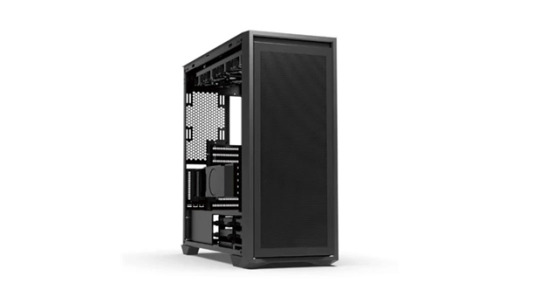
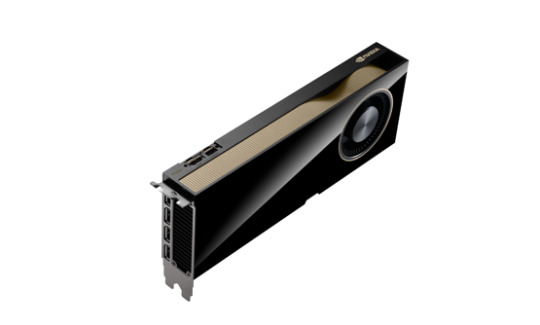
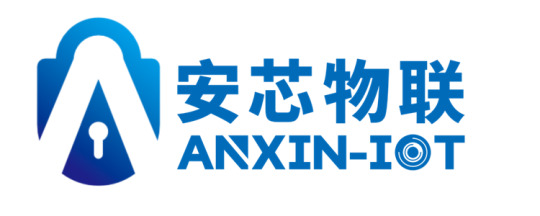
AXGOOD
Booth number: 9D6
August 27–29, 2025
Shenzhen World Convention and Exhibition Center (Bao’an New Hall)
Company Profile
AXGOOD is committed to the research and development and production of smart IoT products. After years of development, it has accumulated a variety of IoT solutions and has occupied a place in the industry. The company’s technical R&D team includes software, hardware, and structural design, which can provide customers with one-to-one team services, tailor-made, and maximize the characteristics of the enterprise to meet the needs of enterprise development and publicity. Since the establishment of the company, the customer industry has covered multiple fields such as communications, towers, railways, electricity, and transportation. We adhere to the service core of professionalism, integrity, and aggressiveness, aiming to connect all business opportunities for enterprises through our unremitting efforts, help customers maintain their advantages in the Internet era and environment, and go with customers through thick and thin, grow together, share joy, and be the leader in technology marketing.
The company’s products include: NB-IOT smart manhole cover | NB-IOT padlock | optical exchange box smart lock | passive electronic lock | tower base station access control electric lock | integrated cabinet lock | IC card swipe electric lock | NFC smart lock and other products.
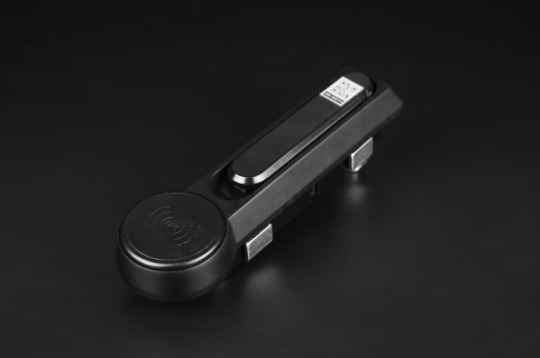

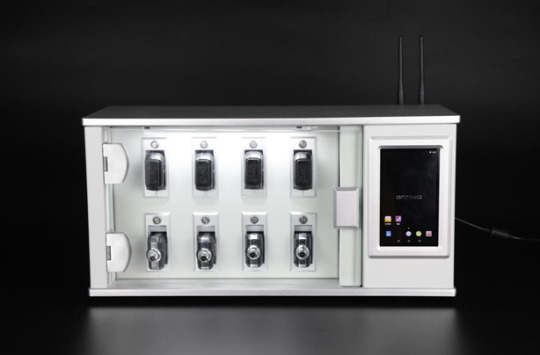
The Bluetooth key management box is a key management terminal product that supports USB/BLE4.0 Bluetooth communication and authorization.
The main body of the product is made of cold-rolled steel plate sprayed with plastic, and the window is made of tempered glass. The overall silver-gray tone is calm and generous. It contains Bluetooth communication and USB line communication. After connection, it can automatically upload the key internal records, authorize the latest permissions, and internal clock and other functions.

GUANGZHOU CHI LI AUTOMATION EQUIPMENT CO., LTD.
Booth number: 9D40
August 27–29, 2025
Shenzhen World Convention and Exhibition Center (Bao’an New Hall)
Company Profile
GUANGZHOU CHI LI AUTOMATION EQUIPMENT CO., LTD. is a high-tech enterprise located in Guangzhou Huangpu Technology Headquarters Port, focusing on the development and production of industrial RFID label automatic compounding equipment, RFID label high-speed UV printing, coding, testing equipment and automatic labeling equipment;
Chi Li’s equipment is widely used in many large, medium and small professional RFID label production companies, with a high market share and has won unanimous praise from customers.
Chi Li’s core team and technical force are the elites and pioneers in the domestic automation production equipment industry, and have been committed to the research and development, production and innovation of RFID label production equipment.
Chi Li’s products are based on the domestic market, and are also exported to American countries such as the United States and Mexico; European and American countries such as Spain, Portugal, the United Kingdom, Germany, Turkey, Morocco, and Southeast Asian countries such as Vietnam, Bangladesh, India, Indonesia, Cambodia, and Myanmar.
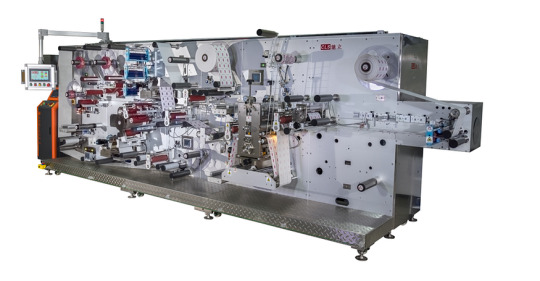
Product: Label automatic laminating machine
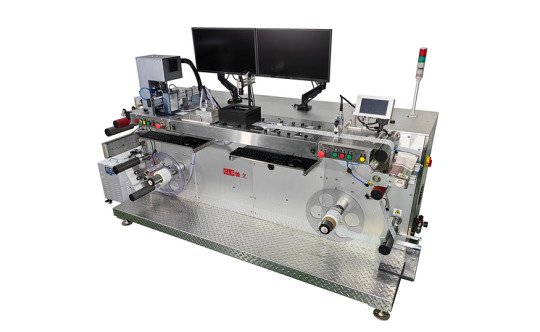
Product: High-speed roll-to-roll label UV printing, coding, and testing equipment
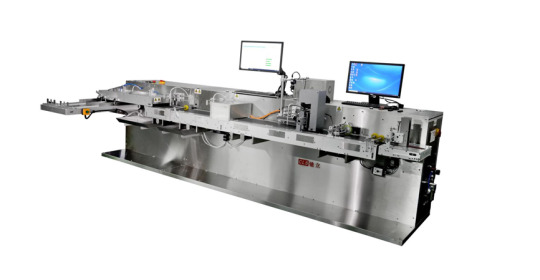
Product: High-speed hang tag UV printing, coding, and testing equipment
Model: CL-526IE
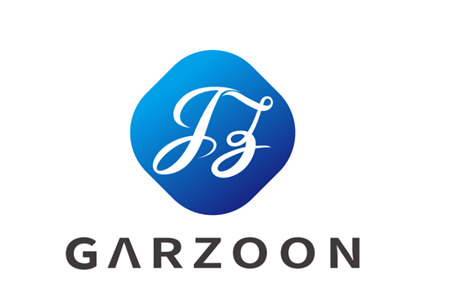
SHENZHEN GARZOON ELECTRONICS CO.,LTD
Booth number: 11A51–2
August 27–29, 2025
Shenzhen World Convention and Exhibition Center (Bao’an New Hall)
Company Profile
SHENZHEN GARZOON ELECTRONICS CO.,LTD, founded in 2012, is a national high-tech enterprise integrating R&D, design, production and sales, and is also a leading supplier of touch display products and application solutions in China. The company focuses on the differentiated and personalized customized development of customer products, covering the R&D, design and production supply of touch screens and LCD screens. The products are mainly used in intelligent hardware products such as security industrial control, smart medical care, smart home, smart Internet of Things and human-computer interaction. As a leading manufacturer of touch technology, Garzoon can provide customers with a full range of touch technology application solutions, including product design, R&D to mass production.
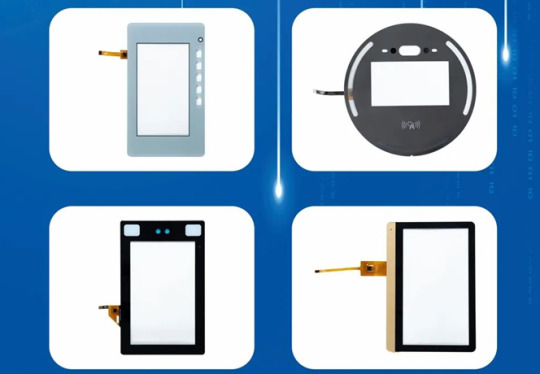
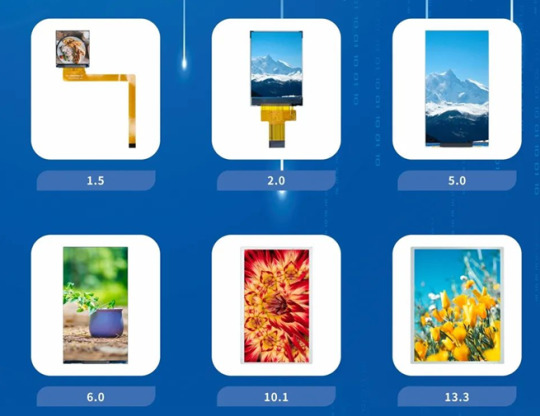
LCD display products are mainly small and medium-sized products, targeting attendance access control, robots, smart hardware, smart small appliances and other product applications. At the same time, there are multiple options for special product applications such as high brightness, wide temperature and high resolution. In the field of touch display products, the company can produce and ship in a variety of combinations in line with the actual needs of customers, such as: cover plate + LCD screen + full lamination, touch screen + LCD screen + full lamination, cover plate + incell screen + full lamination, or single touch screen or single LCD screen production and shipment.
At present, industry trends are changing rapidly, and it is crucial to seize opportunities and seek cooperation. Here, we sincerely invite you to participate in the IOTE 2025, the 24th International Internet of Things Exhibition, Shenzhen Station, held at the Shenzhen World Convention and Exhibition Center (Bao’an New Hall) from August 27 to 29, 2025. At that time, you are welcome to discuss the cutting-edge trends and development directions of the industry with us, explore cooperation opportunities, and look forward to your visit!
0 notes